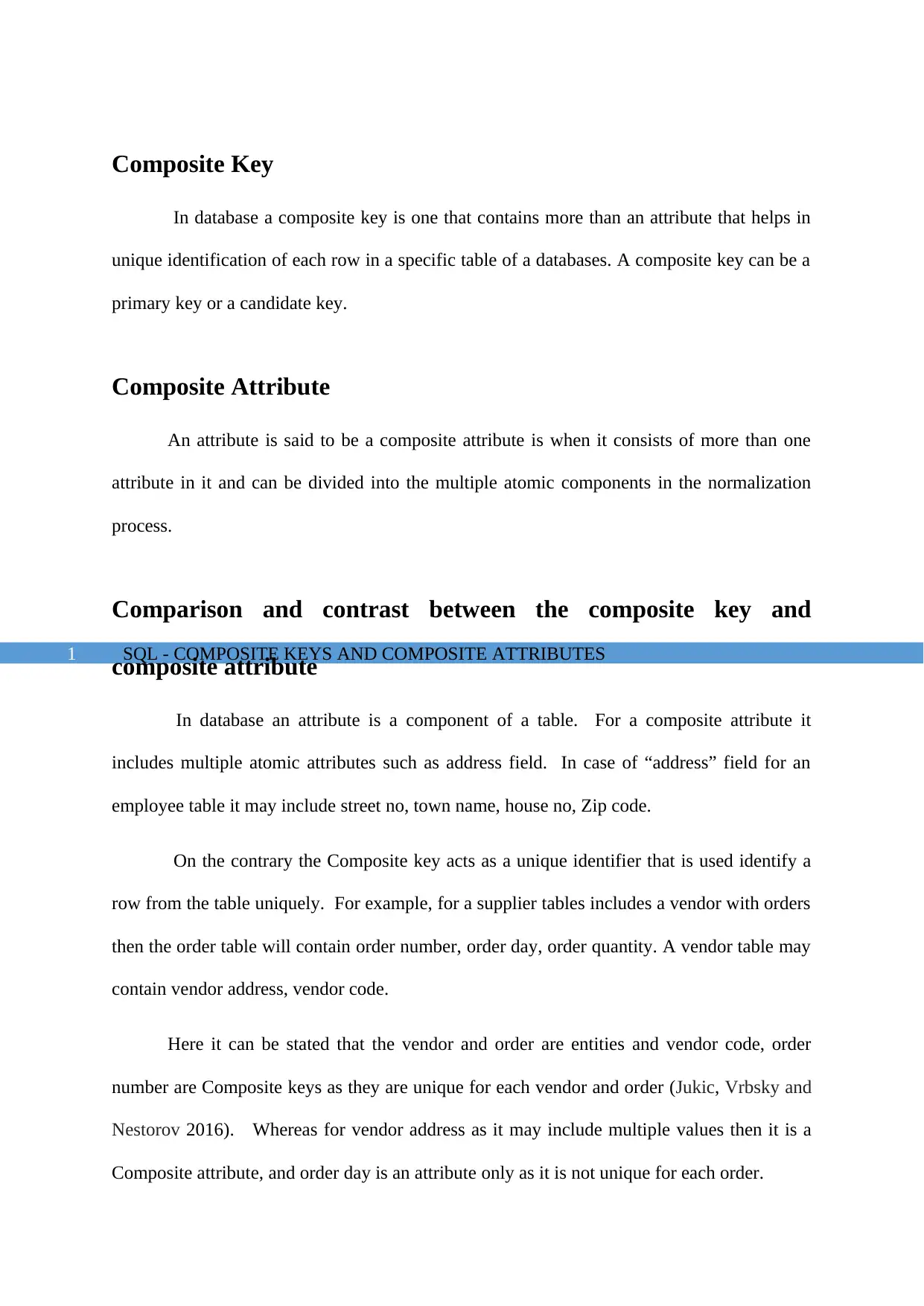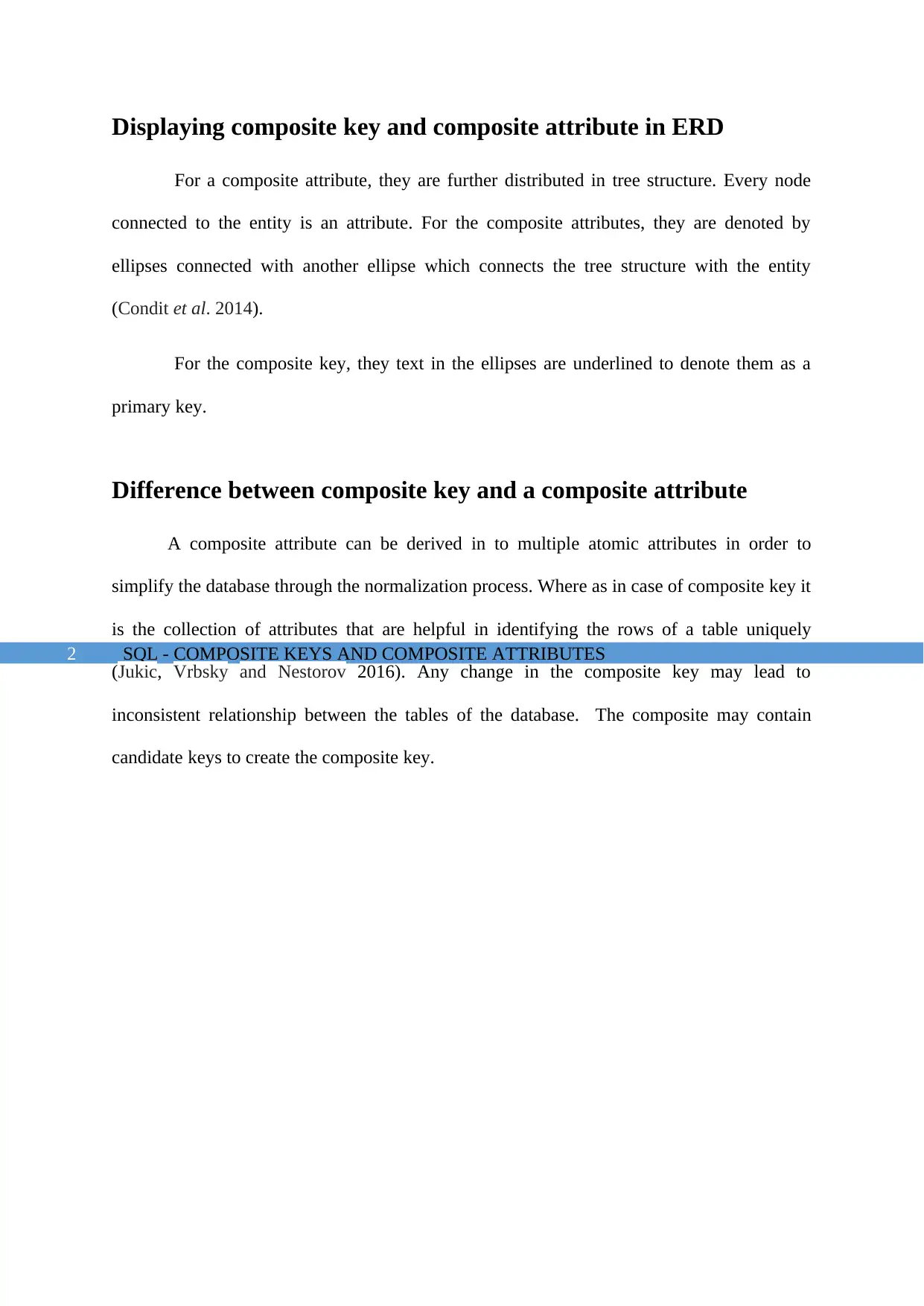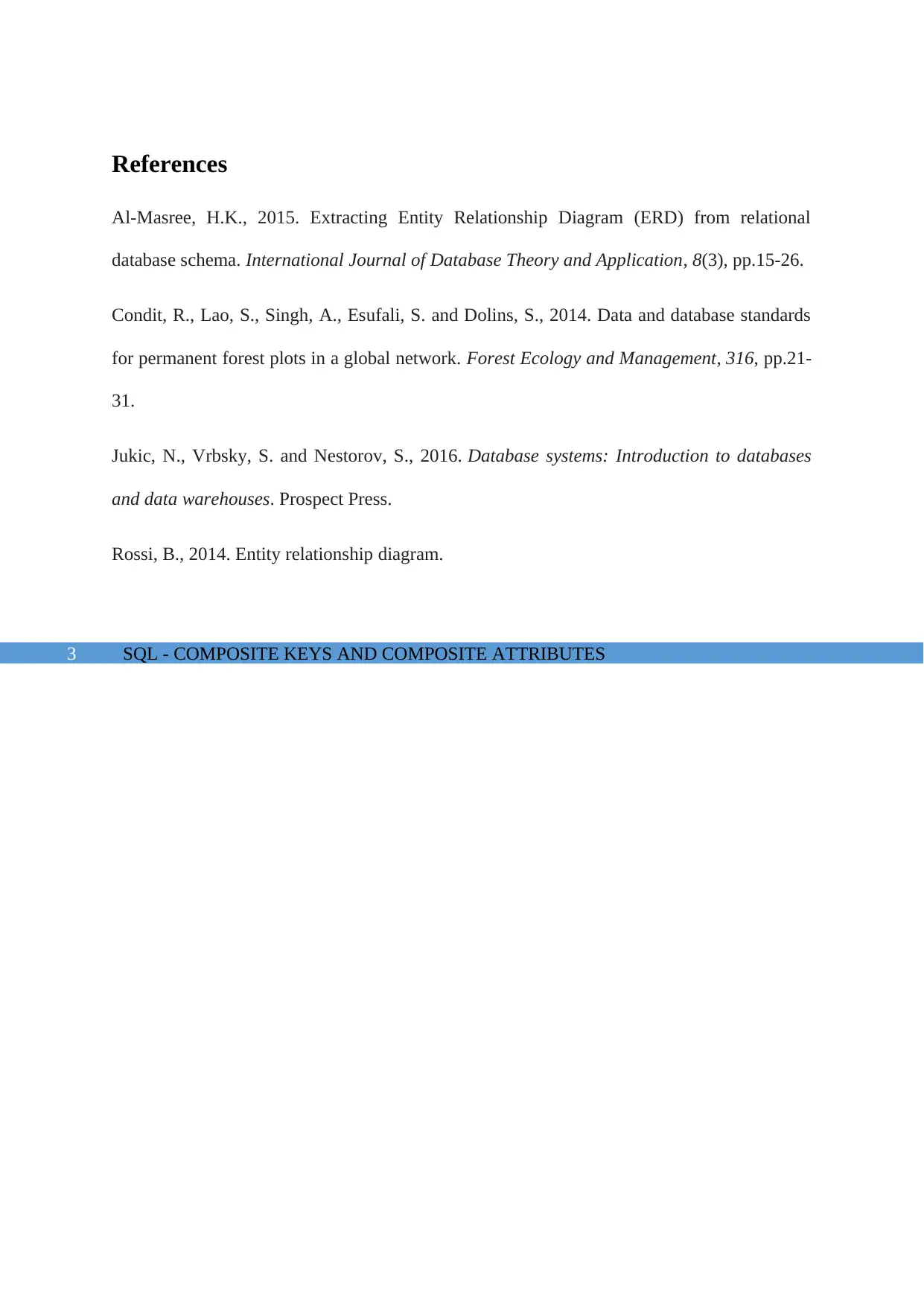Database Systems: SQL Report on Composite Keys and Attributes
VerifiedAdded on 2021/04/16
|4
|605
|1671
Report
AI Summary
This report delves into the concepts of composite keys and composite attributes within the context of SQL and database systems. It begins by defining both terms, explaining their roles in database design and normalization. The report differentiates between composite keys, which uniquely identify rows in a table, and composite attributes, which can be broken down into multiple atomic attributes. It uses examples from supplier and order tables to illustrate these concepts. The document also discusses how composite attributes and keys are represented in Entity Relationship Diagrams (ERD). Finally, it highlights the differences between composite keys and composite attributes, emphasizing the importance of composite keys in maintaining relationships and the role of composite attributes in the normalization process. References are provided for further reading.
1 out of 4










![[object Object]](/_next/static/media/star-bottom.7253800d.svg)